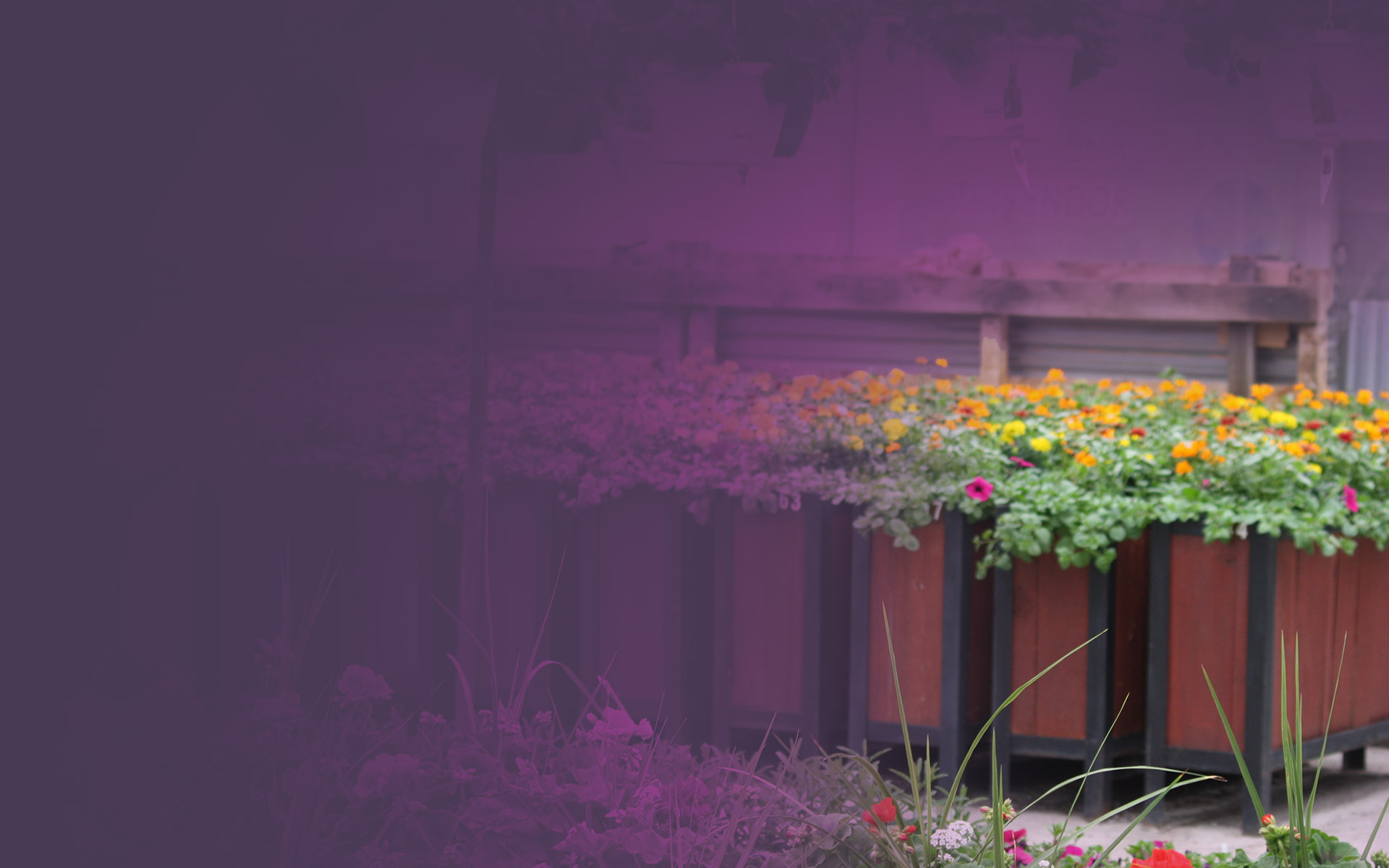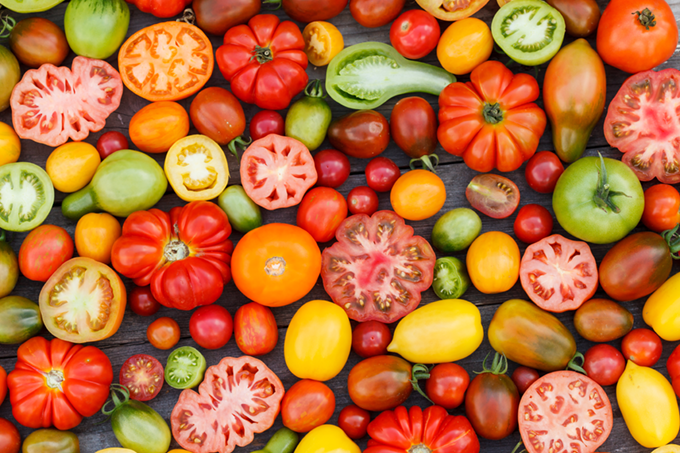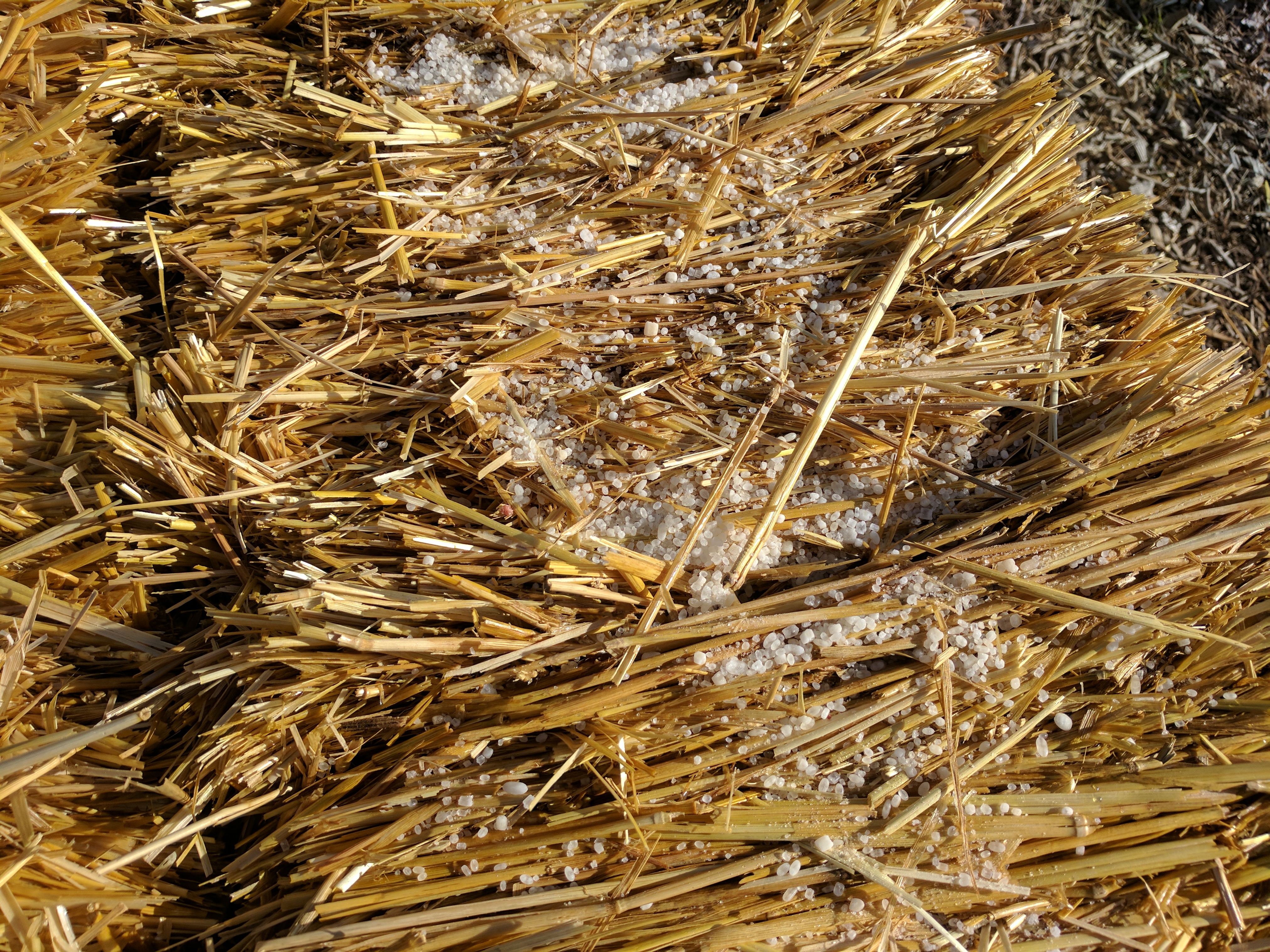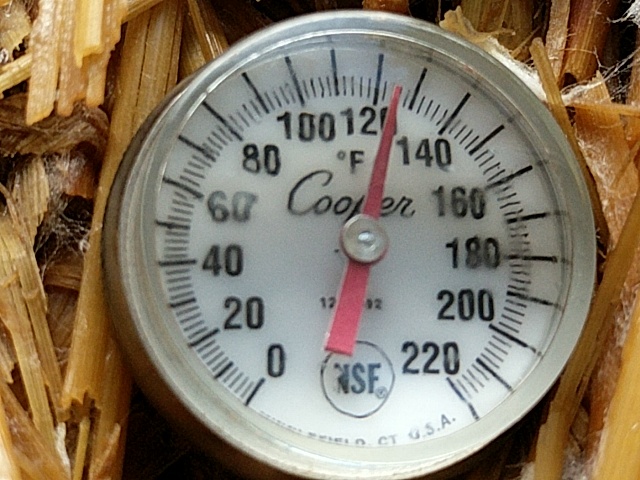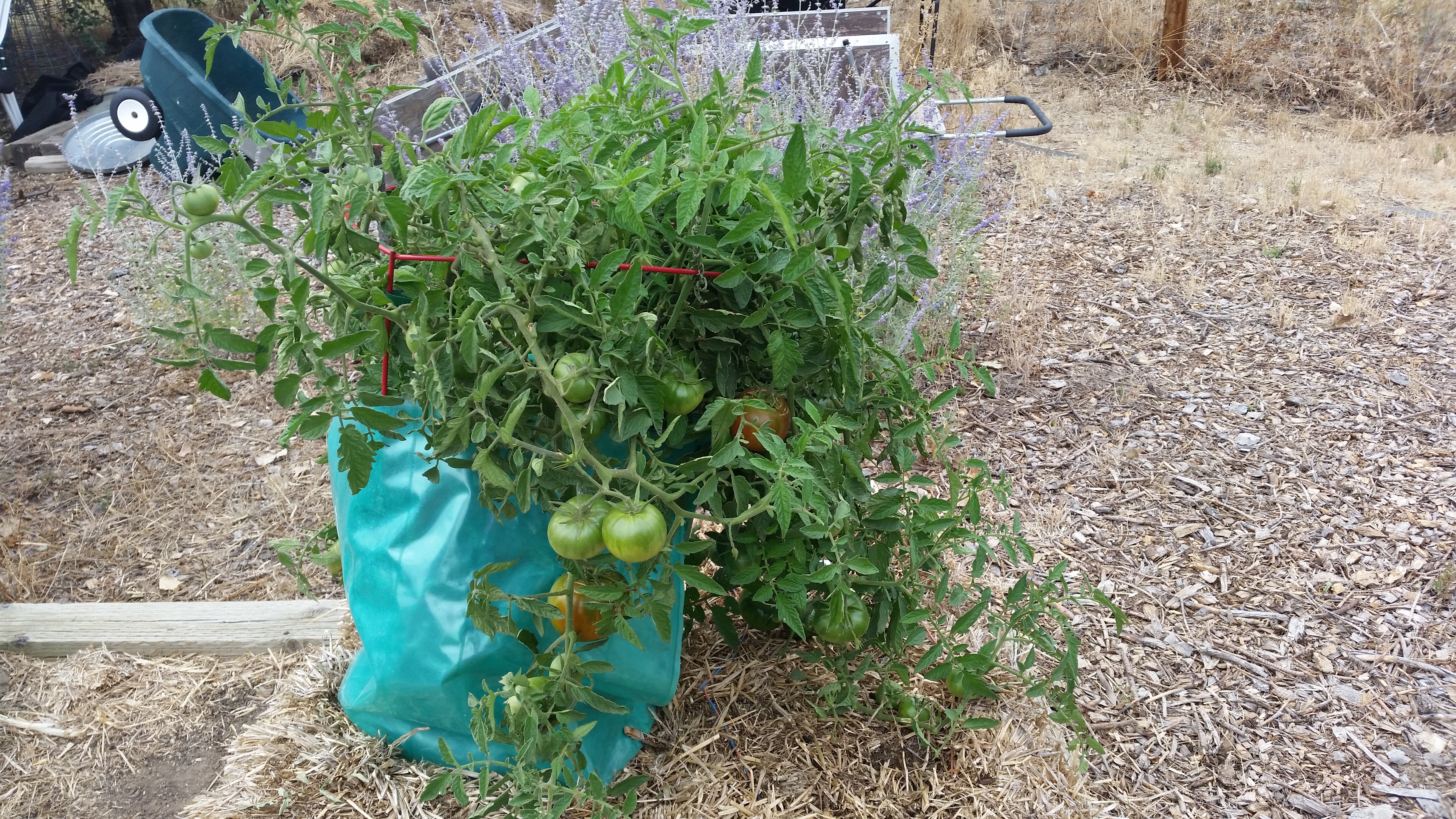My interest in straw bale gardening began with frustration, pure and simple. For whatever reason, no matter how hard I tried, I couldn’t grow heirloom tomatoes. I’d improve the soil in my raised beds with compost. I’d choose some of the most popular heirloom varieties that Tagawa Gardens carries… beautiful, healthy plants that performed wonderfully for many of my co-workers.
I’d plant properly and water carefully. I’d mulch the base of the plants to prevent splash-back that could transmit soil-borne diseases. I’d space the plants so their leaves never touched. And then one by one, I’d watch the heirlooms fail.
Rats! Foiled again! I’m the Outreach Ambassador at Tagawa Gardens, for Heaven’s sake! I’m supposed to be good at this stuff! But my heirloom tomatoes didn’t seem to know that.
There’s just something about heirlooms…
Heirloom tomatoes are famous for their deep, dense tomato taste. They’re the old-fashioned varieties. You know, “the tomatoes that your grandparents grew.” But unlike more modern hybrid tomatoes that are bred for flavor and disease resistance, heirlooms don’t fight off infection very well. Like a kid who gets a cold when somebody in the next classroom sneezes.
I’d heard about “Straw Bale Gardening….”
I knew this technique was “out there,” coming up in current gardening conversations. I just hadn’t tried it. But when I saw the book “Straw Bale Gardening Complete” by Joel Karsten on the Tagawa Gardens book shelf, I was all in! As Karsten says, it’s like container gardening, only the bale is the container.
Straw bale gardening isn’t about plopping a plant down into a bale of straw and waiting for the magic to happen. The bale needs to be specially conditioned for about two weeks before it’s ready for plants.
That “conditioning” involves triggering the inside of the bale to begin to very slowly decompose. Naturally-occurring microbes are everywhere outdoors. They’re why an unused straw bale left out in the elements will slowly begin to decay on its own. We’re just speeding up the process.
We do that by putting a source of nitrogen deep into the bale. I used ammonium sulfate, one of several nitrogen choices that Karsten recommends in his book. I sprinkled it over the top of the straw and then forced it down into the bale with a strong jet of water until the ammonium sulfate granules disappeared.
Organic gardeners can use other sources of nitrogen, such a blood meal. Animal manures alone aren’t “hot” enough to begin the decomposition process.
This conditioning continues for about two weeks. The “recipe” calls for watering in fertilizer one day, watering only the next, with some minor changes as the process progresses.
During this time, the appearance of the outside of the bale won’t change at all. But there’s magic going on inside! The combination of water and nitrogen kicks the microbes into high gear. They reproduce rapidly and that creates heat. A compost thermometer inserted into the bale mid-way through conditioning should show temperatures noticeably higher than the surrounding air. Bales I’ve conditioned registered anywhere from 35 to 60 degrees warmer.
That heat will usually peak about half-way through the conditioning process. By day 12, the temperature will drop significantly, but the benefits for plants’ roots continue.
The process creates a root-friendly environment, well-removed from any soil-borne insects and diseases that can be a problem for crops grown in beds.
And how did my straw bale experiment last year go?
For a rookie, it went pretty well! I actually harvested several heirloom tomatoes from the one heirloom that I decided to grow in straw bale. It was a “Paul Robeson,” a beautiful mahogany red, medium-sized tomato with wonderful old fashioned flavor.
The plant grew so big it needed a second tomato cage for support. Somewhat to my surprise, the herd of bunnies I garden with weren’t at all shy about jumping up onto the bale to nibble the tomatoes themselves. I grabbed a couple of empty Walls o’ Water and used them as impromptu fencing. Not elegant or pretty, but it kept the rabbits at bay.
Paul Robeson isn’t a heavy producer. I harvested about 25 tomatoes from the one plant. But they were yummy! Finally, heirloom tomatoes from my own garden!
I don’t pretend to be an expert on Straw Bale Gardening.
I’m definitely a student, not an expert, but I’m an enthusiastic student! My success has prompted me to grow all 15 of my tomatoes in straw bales this year. About half of those tomatoes are heirlooms! Fingers crossed!
Somewhat on a whim, I’m also experimenting with growing potatoes inside a conditioned bale of straw. I was a bit skeptical. As Karsten’s book directs, the seed potatoes are inserted deep inside the bale, much as potatoes grown in soil are buried and re-buried as the vines emerge. I used a wooden survey stake to create a deep slot then carefully inserted three of Tagawa’s Yukon Nugget organic seed potatoes.
It took a month, but guess what just emerged! The theory is that the potatoes will form along the buried part of the stem well inside the bale. To harvest, I break open the bale in the fall after the vines have died back. The little spuds come out clean and unblemished. I’ll let you know…
Straw Bale Gardening pro’s and con’s
The pro’s:
- No digging.
- No soil-borne diseases or insects
- Very little weeding, aside from some grassy blades that emerge as the bale is watered.
- They’re harmless and don’t last long.
- Can grow just about anything you grow in the ground, except corn, which is very shallow-rooted
- Can start crops from seed with a 2- to 3-inch layer of seed mix on top of bale.
- Can be used in small, sunny spaces and “temporary” gardens.
- Straw from used bale available as compost at end of season
The con’s
- Need clean weed-free bales.
- Bales last only one season.
- Plants require careful attention to watering and fertilizer.
- May need extra supports for tall/vining plants.
So, is Straw Bale Gardening right for you?
If you’re doing well-growing veggies in beds or in containers, straw bale gardening may not be a good fit. “If it ain’t broke….,” right? But I needed to make a change and in the very early stages of this experiment, I’m happy with the results. And if I’m surviving on tomato sandwiches a few months from now, I’ll be thrilled!
“Straw Bale Gardening Complete” by Joel Karsten is loaded with pictures and lots of details that will be helpful to anyone who wants to explore this type of gardening. I refer to it frequently.
If you decide to experiment with straw bales yourself, let me know how it works for you. Send pictures and we’ll compare notes at the end of the season. Best of luck!
